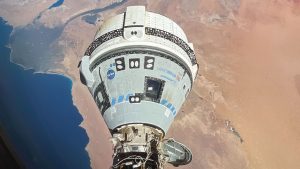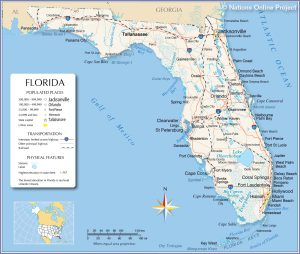What Kind Of Food Can We Grow On Mars?

Will we produce the amount of food our Martian colony needs to survive? With a little planning that involves, a method for growing food indoors, proper training on how to recognize and solve potential problems with our crops and choosing the right kind of plants to grow, we should be able to produce as much food as we need in a limited space.
What Will We Eat On Mars?
According to the Mars One website, we will be using 50 square meters of space to grow food. That’s assuming nobody manages to smuggle along some extra seeds and supplies needed to stick a plant in a corner of a habitat so we can supplement what we grow in the official greenhouse. That idea seems to be a favorite with certain people in the Aspiring Martians Group. Favorite suggestions have included hemp plants (apparently the seeds are small enough to be easily hidden) and a banana plant (which has been called the Swiss army plant of the floral world).
The Greenhouse
A small greenhouse that can produce enough food for a crew of four (for starters) can seem like a real challenge unless you have the right kind of equipment on your side. It should be easy enough for people who maybe haven’t previously had a lot of experience with greenhouse experience to operate with some training. As of right this minute, I assume that most applicants can keep a potted plant alive and maybe have a reasonably sized garden if their living arrangements allow it. At least one has installed a miniature ecosystem and brags that the mosquito population has dropped because of the fish. However, the currently proposed hydroponics system is a little more technically involved than just sticking seeds in the ground. It will need systems to regulate the flow of water and nutrients, monitor the pH levels for each type of plant, and assist the crew in identifying difficulties with the system. (I include plants in “the system.” A computer-aided test might be able to tell the difference between blight on the tomatoes and the plants not getting enough nutrients.) PlantLab seems to have a pretty good system for growing food in a limited space.
The hydroponics system should also be fairly self-sufficient. Each design will have varying maintenance needs, so it will be a matter of knowing the pros and cons. The crew might not always have time for constant maintenance of such a system when they need to pay attention to the life support systems and maybe go on EVA to check on a misbehaving rover.
The greenhouse should also contain plants that can fill the nutritional needs of the crew over the long-term. Some of my favorite proposals include:
- Dandelions. Loaded with vitamins like A, C and K along with calcium and substances that aid the digestive system and memory and may also help reduce the risk of cancer and remove toxins from the body. Also, as anyone who has tried to keep their lawn looking nice knows, dandelions multiply like weeds!
- Hemp. This plant has been associated with marijuana production but also has its uses if you get a version that doesn’t contain much THC, which is the substance that causes the high. Besides the seeds that contain high levels of protein and amino acids, you can also create ultra-durable clothing, plastics and paper. Hemp can also make good insulation in a pinch.
- Banana plants. Technically, bananas don’t come from trees but they are still quite useful if you can get a variety that still has seeds for future generations. The fruit contains good amounts of Vitamins B6 and C along with potassium, which is why some people recommend having one with breakfast to help you stay awake. Dried pseudostems can be used to replace the soles of worn-out shoes. The peels also make a good starter for a compost pile. Burn the peel, and you have a substance that can be used to make soap.
- Mushrooms. This is a popular choice for indoor gardening hobbyists who want to make sure they’re getting protein and Vitamin D in their diet without eating meat. Button mushrooms of the sort that is popular for making stuffed mushrooms are the easiest to grow. Stick them in a cool and dark corner and keep them moist.
This is an incomplete list, of course. Asparagus and potatoes can also grow well in Martian soil without a lot of tinkering. But what about the nutrients you can’t get from plants?
Animals On Mars?
Okay, we probably won’t have a lot of cute baby animals running around during our first years on Mars, but there are a few people who don’t want to give up their animal proteins for the sake of pioneering the future of mankind. Some animals that might be workable on Mars include:
- Bugs. Ew, right? However, besides the fact that bees can help us fertilize our flowering plants, insects like grasshoppers and crickets are actually considered delicacies in some parts of the world. Many of them have more protein per kilogram than many common farm animals.
- Fish. The right fish can be a good source of both protein and amino acids. The varieties that go to go to Mars will have to be herbivores that can eat plant wastes. Tilapia may be feasible as a filter feeder that can subsist on a diet of phytoplankton and the type of detritus that is commonly found at the bottom of ponds. The downside would be the necessity of shipping a water tank to Mars and maintaining it with whatever you have on hand.
- Chickens. They’re egg layers and you can also eat surplus roosters. They’re omnivores that can eat insects, along with fruit, vegetables, grain and seeds. However, they aren’t very popular indoor animals because they can make one heck of a mess that is nasty to clean up.
- Rabbits. My favorite option, they can subsist on the waste plant material from our hydroponics system, they’re fairly low-maintenance, don’t need a ton of room per animal, and they can reproduce pretty fast. Though there has been talk of “rabbit famine,” the effects of “rabbit famine” was the result of eating mostly rabbit and not much else. And make sure you actually thin your herd by eating some occasionally, because the rabbit population will explode without any checks.
- Goats. One of the favorites for when we actually have an established and growing colony, these animals can provide milk, meat and fur for clothing. But be careful, because they eat everything and will get into your hydroponics if you let them.
So food shouldn’t be a problem on Mars as long as the systems that include living things are wisely chosen for maximum benefit and properly maintained by the well-trained crew.
Learning About Hydroponics
While you’re waiting for your trip to Mars, you might want to get a start on learning about hydroponics with these books.
Stock Up on Hydroponics Supplies on eBay
[ebayfeedsforwordpress feed=”http://rest.ebay.com/epn/v1/find/item.rss?keyword=hydroponics+gardening&categoryId1=11700&sortOrder=BestMatch&programid=1&campaignid=5337337555&toolid=10039&listingType1=All&lgeo=1&feedType=rss” items=”10″]











